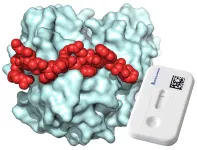Paris, France, 17 May 2023. The field of coronary drug-coated balloon (DCB) angioplasty looks set to assume growing importance in the years to come and the potential for increased use of these devices in clinical practice is considerable.
DCB catheters became available for coronary use in Europe more than 14 years ago and have become widely used in clinical practice around the world since then. In recent years there has been renewed interest in this therapy linked to the development of novel devices coated with drugs from the limus family and a wider experience in the treatment of de novo lesions. As of today, for coronary use, there are no less than 13 paclitaxel-coated balloons with various excipients (such as iopromide, shellac, citrate esters, urea, nordihydroguaiaretic acid) available for use. Four sirolimus- and one biolimus-coated balloon have been developed using BHT excipient among others, polyethylene oxide, biodegradable polyester or microreservoirs embedded with cell adherent technology (CAT coating).
Of note, remarkably in 2023, there are no devices approved for coronary use in the United States, although premarket approval trials are ongoing, and this situation may soon change.
For many physicians, treatment of in-stent restenosis remains the primary indication for angioplasty with DCB. Its use is supported by evidence from a large number of randomised clinical trials and metanalyses investigating paclitaxel-coated balloon catheters in the main. Comparative efficacy studies have shown a lack of a class effect as the interaction between drug doses, formulations and release kinetics has a strong influence on device efficacy. Clinical trial data investigating limus DCB devices are scarce, but a number of trials are ongoing. New evidence was presented during EuroPCR 2023 with a randomised trial comparing the efficacy and safety of a biolimus-coated balloon versus a paclitaxel-coated balloon for the treatment of in-stent restenosis (REFORM). The trial shows the results with the biolimus-coated balloon were encouraging but did not meet criteria for non-inferiority compared with the standard bearer paclitaxel-coated balloon Sequent Please.
At the same time, there is increased interest in the community in using DCB to treat de novo disease. The concept of “leaving nothing behind” is very appealing in certain lesions (i.e., vessels with diffuse disease, side branches in bifurcations and lesions in small vessels) and clinical settings (i.e., diabetes mellitus, multivessel disease, acute coronary syndromes, high bleeding risk patients). The absence of vessels’ caging, the possibility of long-term vessel remodelling and of preserving the physiological vessels’ vasomotion seem to be particularly appealing in such settings. A so-called “hybrid approach”, combining DCB angioplasty in one segment with stenting with DES in an adjacent segment, also seems attractive for the management of diffuse pattern of disease and multivessel disease, reducing the number and the length of the implanted stents. The use of DCB may also be advantageous in patients deemed at high bleeding risk, by allowing a dual antiplatelet therapy de-escalation or fast P2Y12 discontinuation (less than 1 month).
Despite this promise, it is important to emphasise that the clinical evidence for DCB in de novo disease is relatively scarce and mainly related to small vessel treatment. Indeed, the clinical trial landscape in this area is somewhat patchwork, characterised by modest-sized clinical trials, with variable quality metrics and heterogeneity of primary endpoints and notably lacking large-scale trials that are accepted as normal in other areas of interventional cardiology.
Acknowledging recent progress in upcoming trials that are in planning or ongoing, PCR would like to encourage the community to contribute further to enhancing the evidence base for DCB devices, especially with newer approved devices and for patients with de novo disease. A renewed effort is required from clinicians and investigators to coordinate resources, define areas of unmet need for future investigation and to explore the best model for funding trials in this area in the years ahead.
NOTES TO EDITORS
Key information
Session: Late-Breaking clinical data: focus on stent technology
Presentation: Randomised trial of biolimus DEB for in-stent restenosis: the REFORM study
Presenter: Robert Byrne
Palais des Congrès Porte Maillot – Paris, France
Wednesday 17 May 2023 – presentation time 16:03 (session time 14:45-16:15) - Room Maillot
About EuroPCR 2023
The World-Leading Course in interventional cardiovascular medicine and the official annual meeting of the European Association of Percutaneous Cardiovascular Interventions (EAPCI) will take place from 16 to 19 May 2023, onsite at the Palais des congrès, Paris, France. A digital package is also available for those unable to join in person.
The detailed Course Programme is available on: https://www.pcronline.com/Courses/EuroPCR
About PCR
The mission of PCR is to serve the needs of each individual patient by helping the cardiovascular community to share knowledge, experience and practice. PCR offers a large range of many other educational meetings and resources for the continuing education of the interventional cardiovascular community. These include major annual Courses across the globe, e-Learning with high-profile PCR Webinars, Courses specifically dedicated to valvular heart disease, tailor-made PCR Seminars on specific topics, online resources and medical publications such as EuroIntervention, the official journal of the EAPCI.
Gateways to all PCR activities are available on www.pcronline.com
For further information, please contact Sally Collingridge:
scollingridge@europa-group.com
About the EAPCI
The European Association of Percutaneous Cardiovascular Interventions (EAPCI) is a branch of the European Society of Cardiology. Its mission is to reduce the burden of cardiovascular disease through percutaneous cardiovascular interventions. This dynamic association represents a community of over 8,700 healthcare professionals by helping them remain up to date in the constantly evolving field of PCI by publishing research and providing training and certification programmes. The EAPCI also advocates for the best possible access to life saving treatments for patients through data-based advocacy at a European level.
HELP FOR JOURNALISTS TO COVER EUROPCR 2023
Register and attend EuroPCR 2023 as a journalist
Open to accredited journalists, free of charge. Journalists must hold a valid press card and/or provide a letter of assignment from a recognised publication. To register as press, go to: https://www.pcronline.com/Courses/EuroPCR/Press
EuroPCR press releases can be found at:
https://www.pcronline.com/News/PCR-Press-Releases
For any press-related enquiries, please contact EuroPCR Press Coordinator, Isabelle Uzielli:
iuzielli@europcr.com
END



